Global Empire
The curator of an ambitious new exhibition explains how Portugal brought the world together
/https://tf-cmsv2-smithsonianmag-media.s3.amazonaws.com/filer/portugal-tapestry.jpg)
Jay Levenson is the Director of the International Program at the Museum of Modern Art in New York and a guest curator of the exhibition "Encompassing the Globe: Portugal and the World in the 16th and 17th Centuries," opening at the Smithsonian's Sackler Gallery in collaboration with the Museum of African Art on June 24.
What was the genesis of this exhibition?
It was really the work I did in the 1492 exhibition for the National Gallery of Art ["Circa 1492: Art in the Age of Exploration," 1992]. We had a section on Portugal, with some extremely difficult loans that took a long time to clear because they were works that hadn't traveled before. By the end of the project we had some very close relationships with Portugal. I always had in mind to go back, because the 1492 show was the world before it came together, but it was during the Portuguese period that first contacts were made. So this was an idea that had been there, and like so many things it took a while to actually reach fruition.
Why is Portugal generally overlooked as a major power in the Age of Discovery?
It's a complete misconception. They got left out, basically. The Spanish voyages were to the New World, and the Spanish voyages to the New World are thought of as part of American prehistory, so they’re closely part of the American school curriculum. There's some coverage of Portuguese voyages down the African coast because that leads to Vasco da Gama getting to India. But it becomes part of Asian history after that, and it drops out of American school curriculum, at least in any detail. It just isn't as well known in this part of the world.
What actually happened was, in a very short period of time, the early 16th century, the Portuguese landed in Brazil and established a network of trading posts around the Indian Ocean, all the way to Macau. Beyond Macau, they got to Japan by the 1540s. They put together this phenomenal network that was less territorial and more commercial—the only sizable land settlements they had were in Brazil. The Portuguese were active in India and the Persian Gulf area, the west and east coasts of India, Japan and China.
Were they the first Europeans to reach Japan?
Yes, in 1543. The first were three traders who were blown ashore, shipwrecked there. The local Japanese were very interested in their guns, because there were no firearms in Japan, but there was very intense warfare. So the Japanese adopted firearms from the Portuguese very quickly.
I was also surprised to learn that Portuguese is the most spoken language in South America. One normally thinks of Spanish first.
Portuguese is the sixth or seventh most spoken language in the world. That's mostly because of the large population of Brazil. It's also spoken in Angola, Mozambique, Portuguese India, East Timor—all of the areas that were part of the Portuguese Empire.
What’s the legacy of the Portuguese Empire?
I think it was bringing people together. It wasn't so much a land-based empire. They didn't have large territorial holdings like the Spanish. They mostly had a network of trading settlements and they had to cooperate with people. They had a certain amount of firepower too, but in Asia and Africa they were dealing with large, established political units so they had to work out accommodations.
What happened in the course of setting up a commercial empire is they also set up a mechanism for the production of new types of art. In Africa, India, Japan and China, the Portuguese were commissioning works of art for the European market. So they really were in the vanguard of creating cross-cultural art as well.
Were they guilty of the same brutality that we associate with other colonial powers?
They don't have a completely clean record. In the Indian Ocean in particular, the Portuguese governors, the ones who established the empire, they were people of their time, and they were relatively ruthless. It was on a much smaller scale, but they certainly had no hesitation in battling, capturing people, executing people, setting ships afire.
The other complicated part of the story, which we’ve not shied away from in the exhibition, is the slave trade. It preceded the Portuguese, but they became involved in it. Once sugar caught on in Brazil they needed huge amounts of labor. It was really the sugar production in Brazil, and the Caribbean a little bit later, that encouraged large scale slave transport from Africa to the New World. That was the first wave.
This exhibition is very broad. How did you condense and organize it?
We tried to keep the focus really on Portuguese activity, and we tried very hard to tell the story with the minimum number of objects we could. We tried to get the right objects, and there was a huge number of lenders. There was a lot of relevant material, but we tried to restrict it to the minimum amount of works that would tell the story.
What are some highlights of the show?
There's a section on early collections of rarities from around the world. The German expression for these was Kunstkammer, "art chamber." It's a type of private museum that powerful rulers would assemble out of rarities from around the world, to show how rich they were, because these things were very hard to get. These collections have become reasonably well-known, but it's only recently that people started associating them with Portugal because a lot of things in them couldn't have gotten to Europe except through Portuguese channels.
There are Indian works in mother of pearl that were given silver gilt mounts by European craftsmen, and works in tortoise shell and African ivory—we have a hunting horn from the Medici collection. From Brazil we have some early colonial sculpture in terra cotta, which was quite rare. We have life-size paintings of the Brazilian Indians that ended up in the royal collection in Denmark. We have several scientific instruments made for the Jesuits in the palace workshops in Beijing in the 17th century.
The portrait of Afonso de Albuquerque, one of the early Portuguese governors of what they called the State of India, is powerful because you can really get a sense of what resolute and incredibly bold people these early governors were. Portugal is a tiny country. The population is around a million. They never had large numbers of troops to work with, and they were incredibly far away from Portugal. It took a long, long time to go around Africa, and the trip could only be made in certain seasons to catch the prevailing winds of the Indian Ocean. To keep something like that going so far from the mother country with a relatively small number of troops was an amazing achievement.
Were there any objects that were difficult for you to get?
One of the maps, which I hope has gotten there by now. You never know at the last minute! It's an amazing map that I tried to borrow for the 1492 show in 1991, but it wasn't possible then. It's the oldest Portuguese map of the world; it dates from 1502. It was apparently commissioned by the Duke of Ferrara through his agent in Portugal, and it's thought to be a copy of the official royal Portuguese map. This map was smuggled out of Portugal in 1502. It got to Ferrara, [in Italy,] and from Ferrara the family brought it to Modena, [Italy,] and it's been in Modena every since. In the 19th century, there was a riot in Modena, and someone stole the map. A librarian found it two years later in a butcher shop—supposedly it was used as a window screen. In recent years it was sent once to Lisbon for an exhibition and once to Genoa, but it's never traveled to the United States before.
This map is sort of an index of how much Europe knew about the world in 1502. You could almost date it to a particular set of months, because it reflects certain voyages but not others. It's like being back in the world of that time and getting an exact cross section of geographical knowledge.
Did the Portuguese change our view of the world?
In the 15th century the most accurate maps of the world were the ancient maps in Ptolemist geography, which actually dated from the second century A.D. They didn't go down to southern Africa because it wasn't believed to be inhabited, and they showed a land bridge from southern Africa to eastern Asia, as though the Indian Ocean were an enclosed sea. In maps from the later part of the 16th century, you can see that as soon as the Portuguese voyaged anywhere, information would come back. In an amazingly short amount of time you'd get a much more accurate view of the world. It was mostly coasts, because they didn't go very far inland, but they were careful about taking latitude readings, and they did the best they could with longitude, which is harder. It's quite amazing when you look at these maps to see these very vague contours rather quickly turning into the contours that you know from modern maps.
/https://tf-cmsv2-smithsonianmag-media.s3.amazonaws.com/accounts/headshot/amy.png)
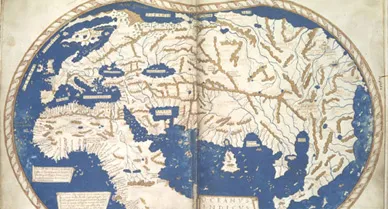
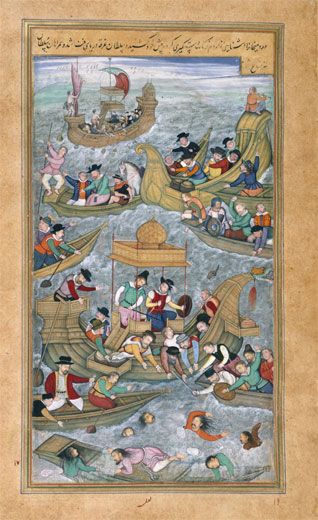
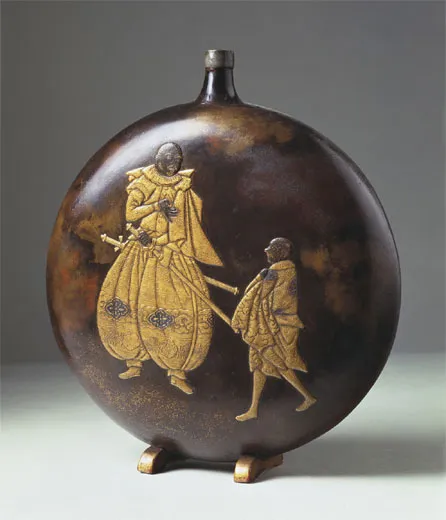
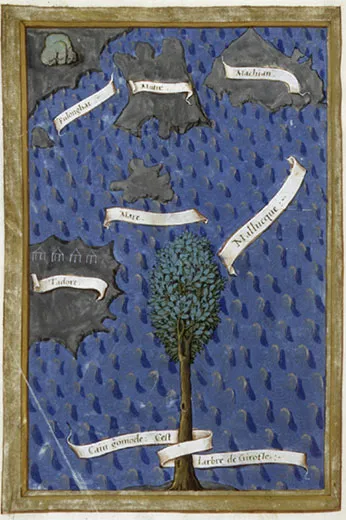
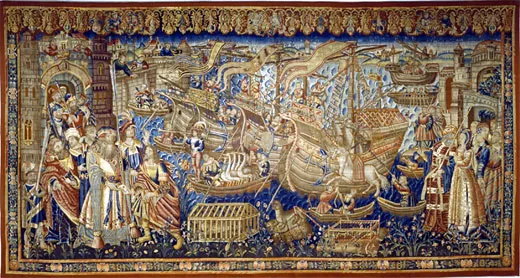
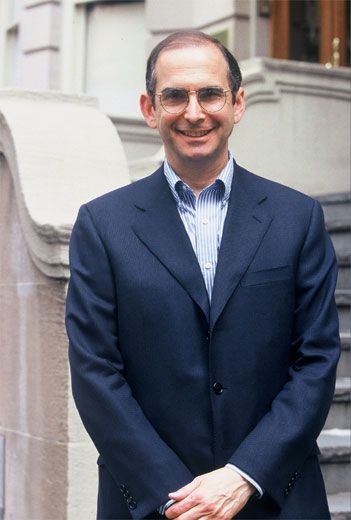
/https://tf-cmsv2-smithsonianmag-media.s3.amazonaws.com/accounts/headshot/amy.png)